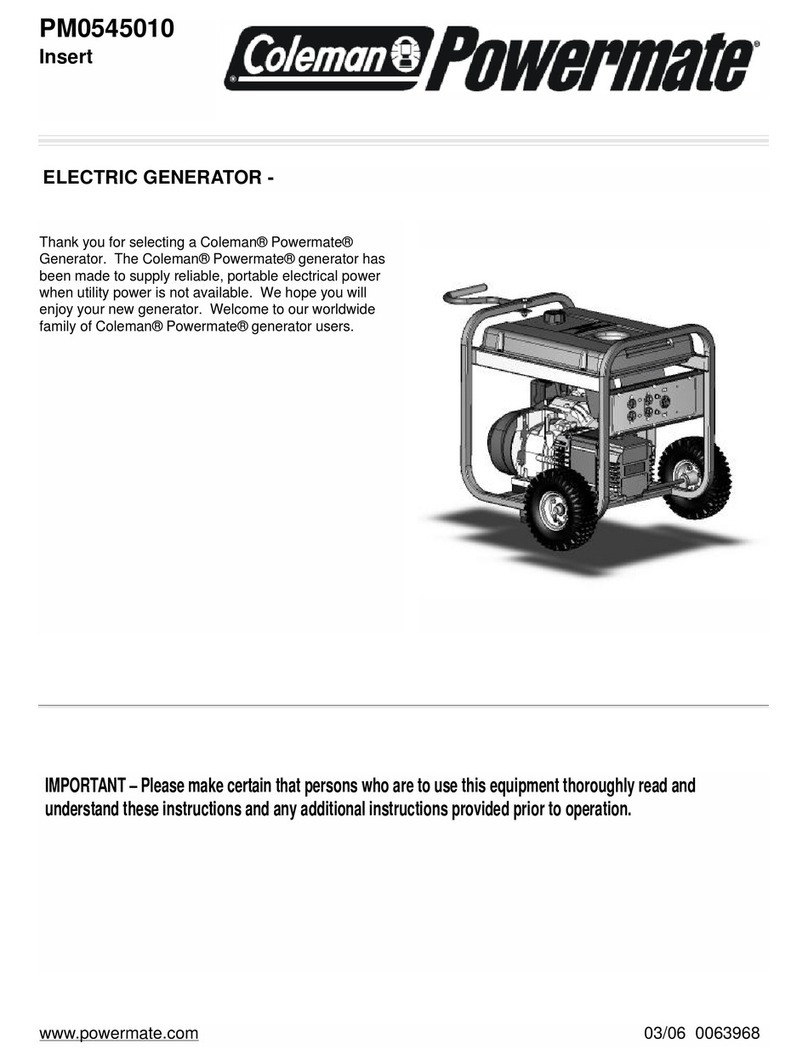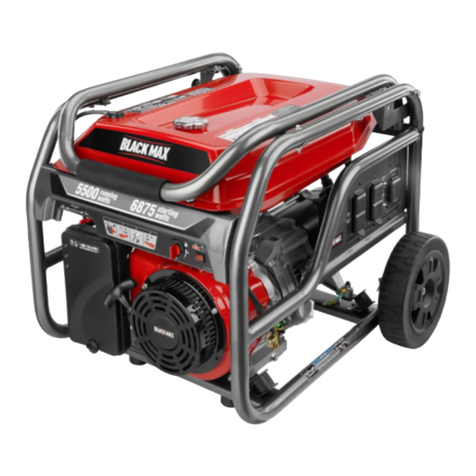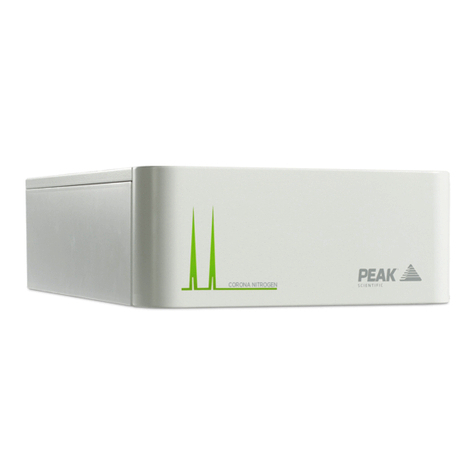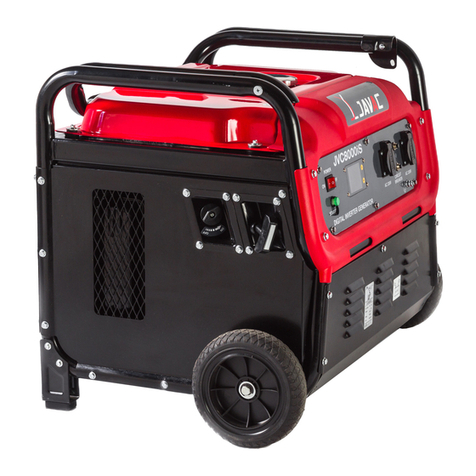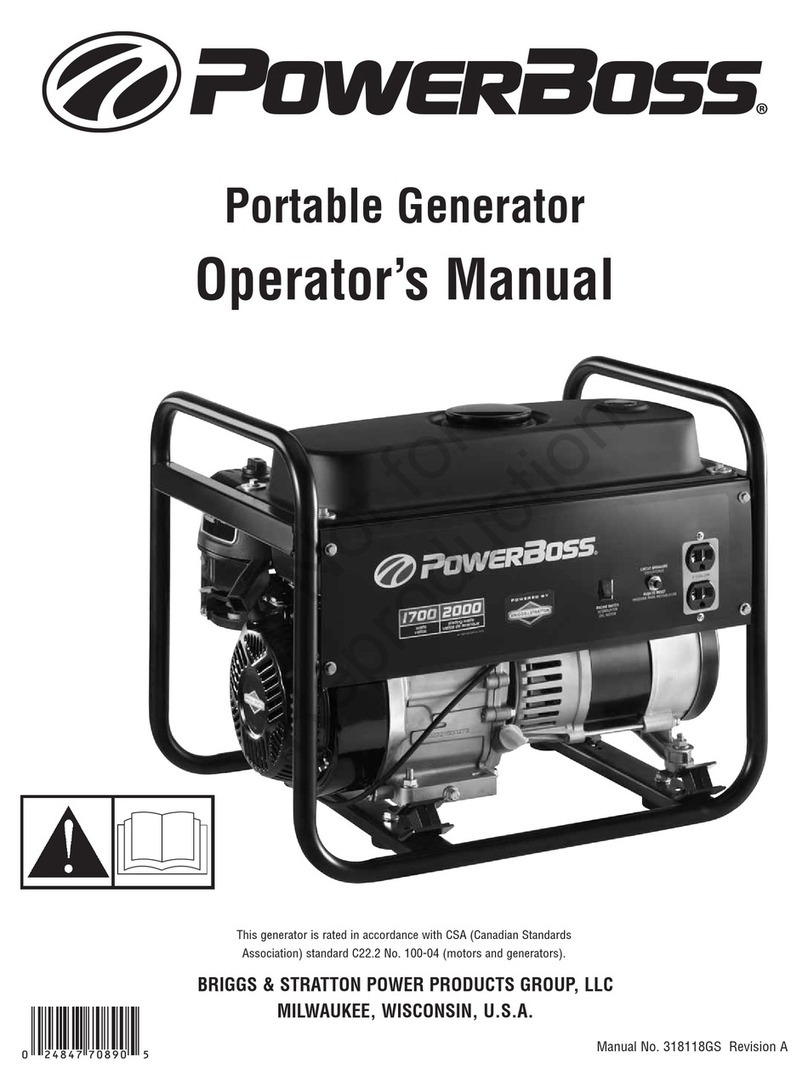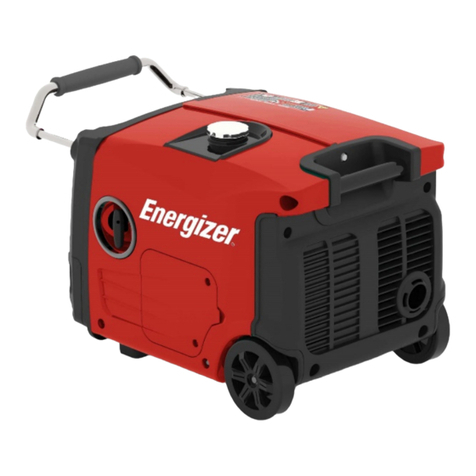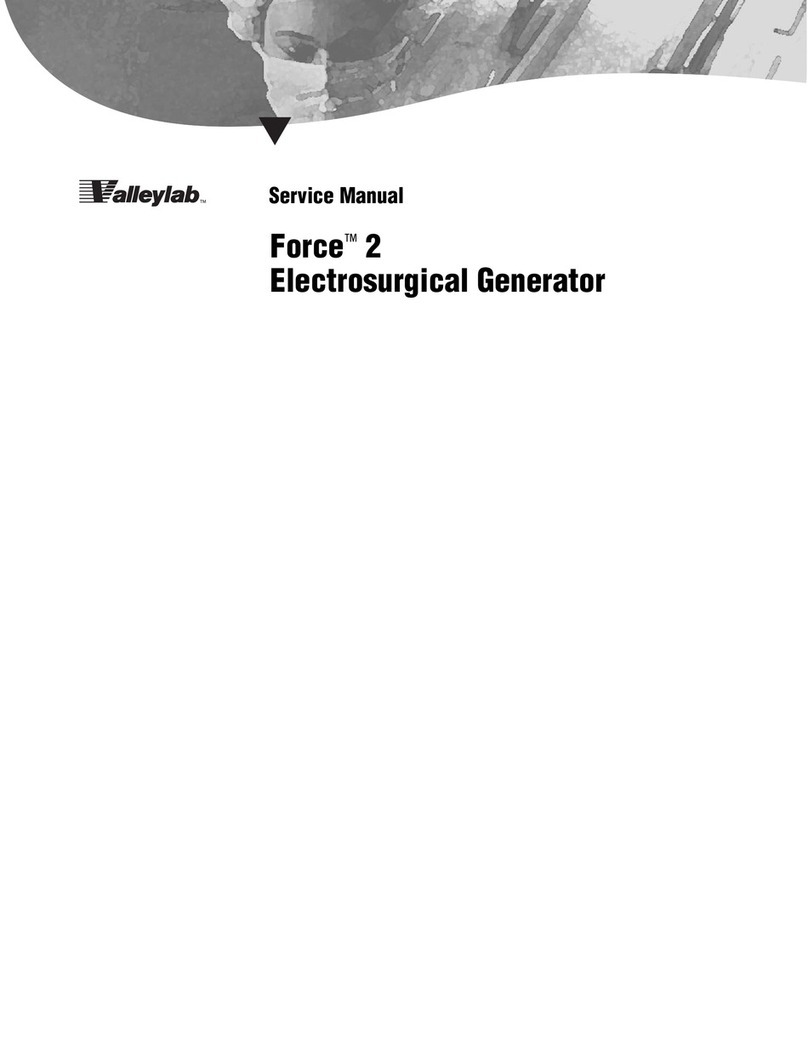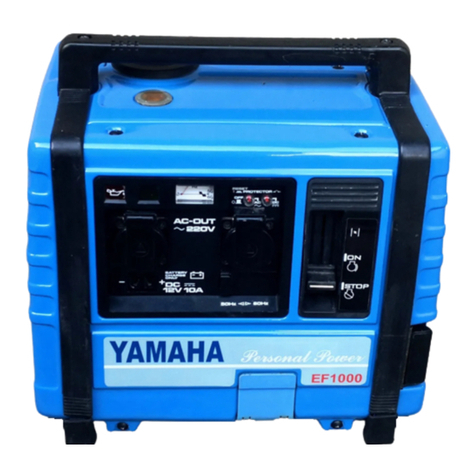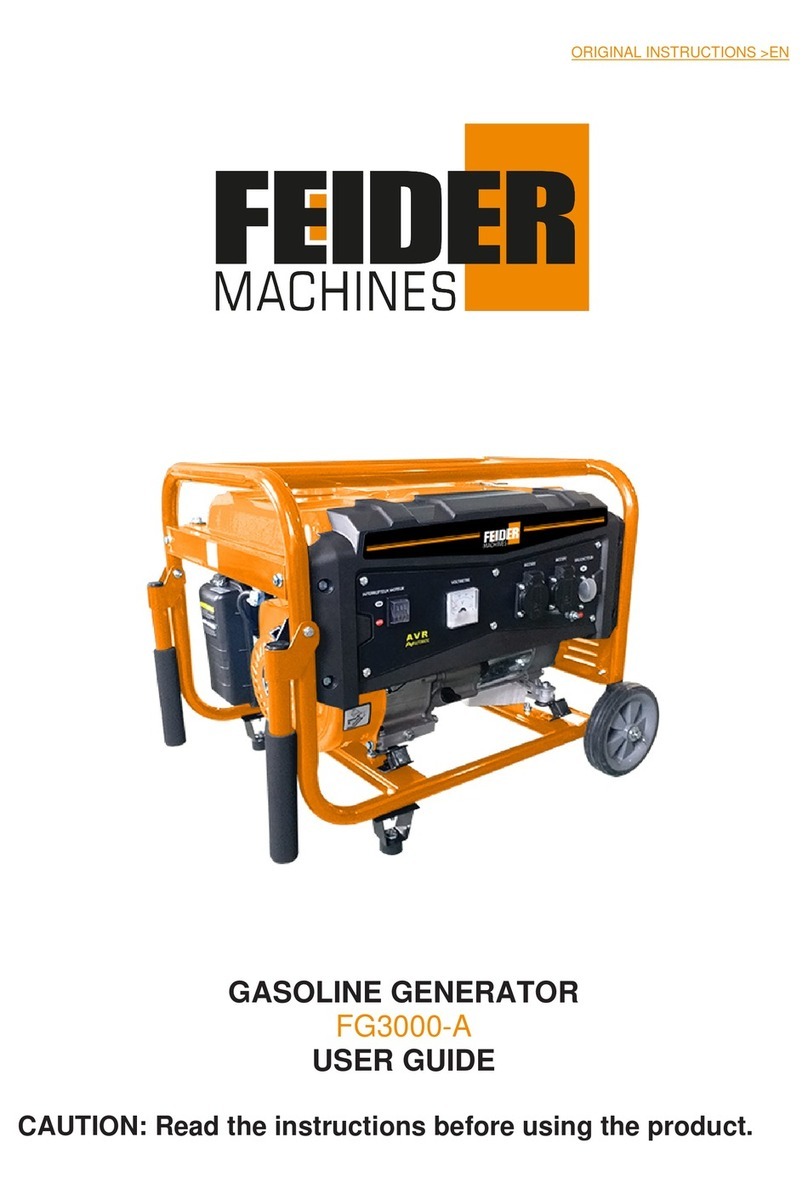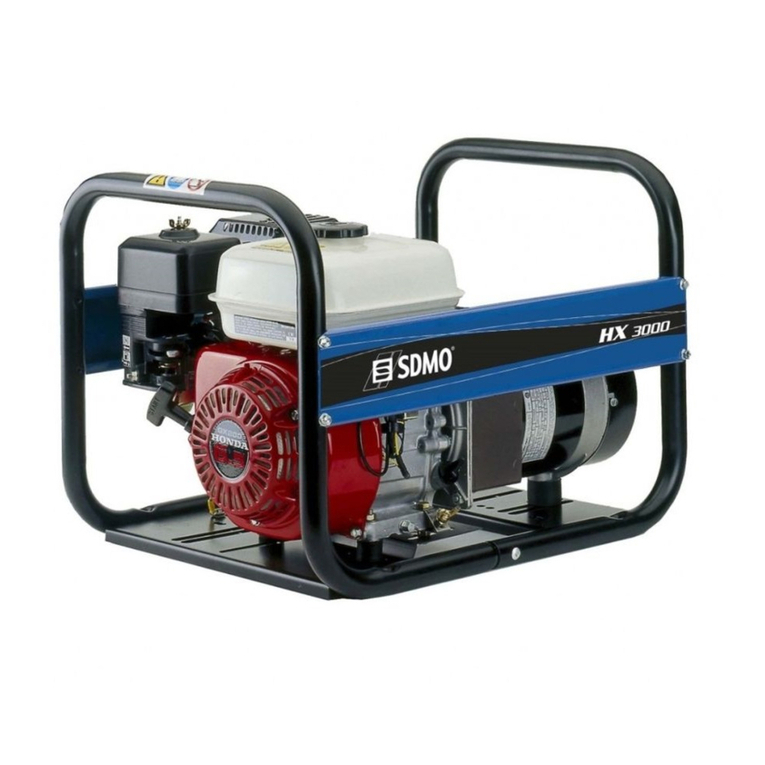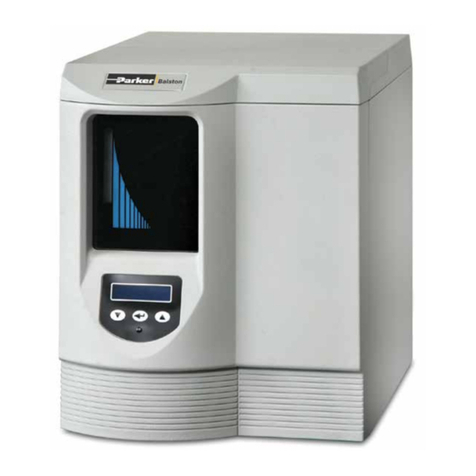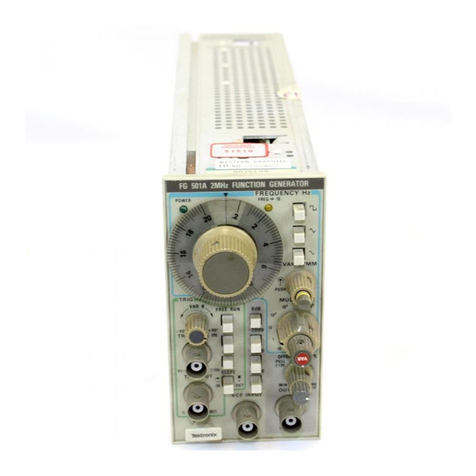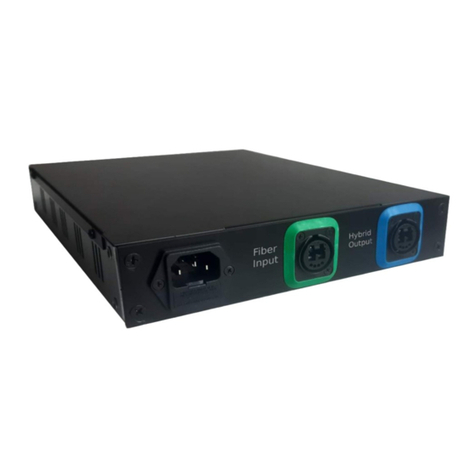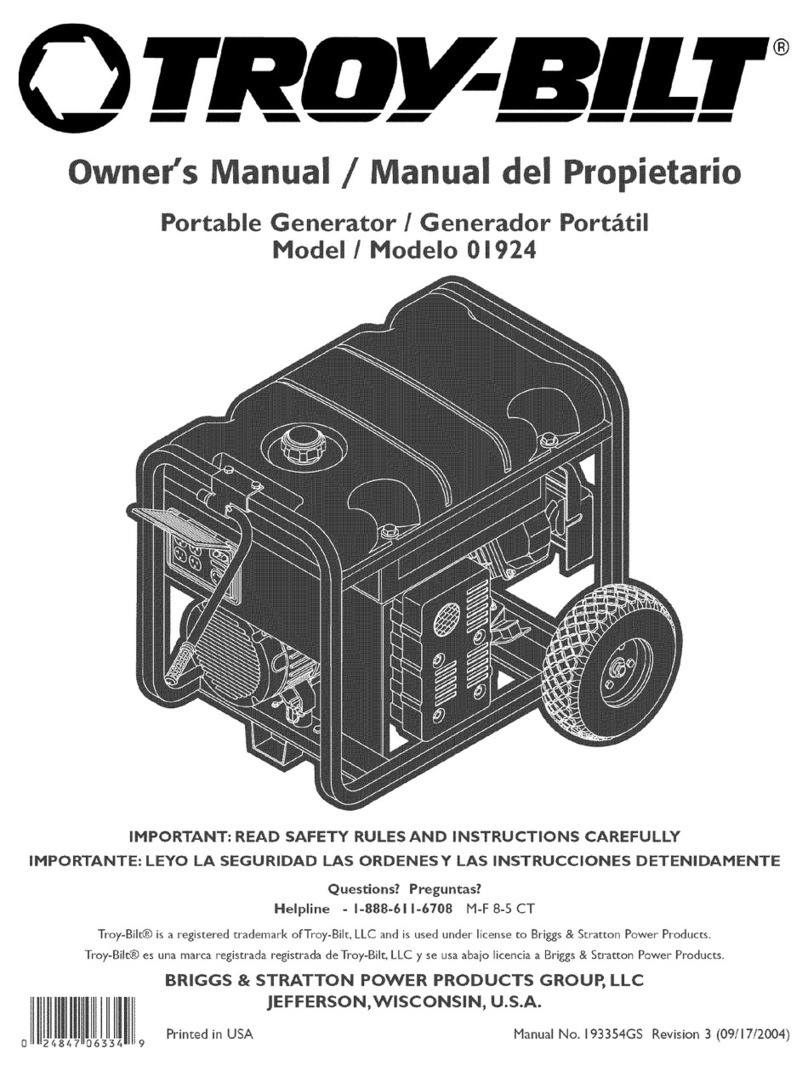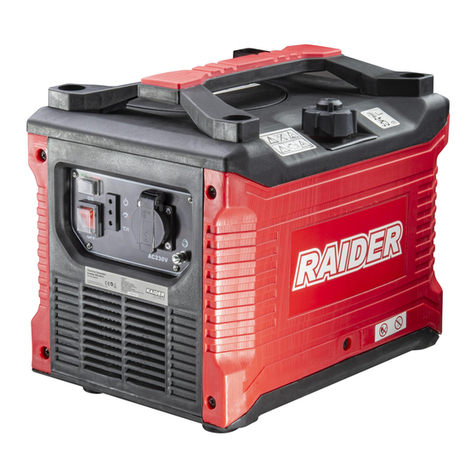CLIO C-RACK OZON Installation instructions

1
Poignées de préhension
Grip handles
C-RACK OZON
NOTICE D’UTILISATION / USER’S INSTRUCTION
Révision K - 12/07/2022
1. Présentation du produit / Product overview
4 roues pivotantes
dont 2 freinées
(Fournies non montées)
Roues gonflables en option
4 Castor wheels including 2
braked (Consumer-mounted)
Optional : Air wheels
Porte à verrouillage
et déverrouillage sécurisé
Door with safety locking
and unlocking mechanism
Générateur
d'ozone intégré
Built-in ozone generator
Câble d'alimentation (230V)
Power cable (230V)
Poids à vide : 150 kg
Empty weight : 150 kg
Poignée de verrouillage
Locking handle
1240 mm
1600 mm
1.2 Panneau de commande
Control panel
1080 mm
800 mm
800 mm
2130 mm
(2212 mm avec roues gonables
with air wheels)
1970 mm
580 mm
Avec option "Garde-corps"
With "railing" option
Avec option "Tablettes" (3 max)
With "shelf" option (max 3)
30 kg
250 à / to 850 mm
C-RACK OZON 120
A B C D E
1.1 Présentation de l'armoire
Cabinet presentation
DAS298

2
Tps injection (min) Tps cycle complet (min) Concentration * durée (min ppm) Concentration Pic (ppm)
Cycle A 2 45 400 28
Cycle B 8 150 3500 80
MODELES
MODELS
CONFIGURATION
CONFIGURATION
RÉFÉRENCES
REFERENCES
EXEMPLES
EXAMPLES
C-RACK OZON 120
TYPE DE CYCLE
CYCLE TYPE
45 minutes A
OU / or
B
150 minutes
TYPE DE ROUES
WHEELS TYPE
Roues standards
Standard wheels C
OU / or
D
Roues gonables
Inflated wheels
TYPE DE
SUSPENSION
HANGING SOLUTION
Tringle
Rail E
OU / or
F
4 cornes
4 front bars
Option «Garde-corps»
Option «Guardrail» DAS298-G
Option «Étagère»
Option «Shelf»
(3 max)
DAS298-H
C-RACK OZON 60
Cycle 150 min
+
1 Tringle / rail
+
3 Tablettes / shelfs
DAS610
OU / OR
+
+DAS298 +
+
600 mm
C-RACK OZON 60
DAS610
640 mm
1940 mm
400 mm
320 mm
+ +

3
245
2m min.
20
sec.
4.2 Déchargement du matériel / Material unloading
1Fin de cycle / End of cycle Déverrouillage / Unlocking Ouverture / Opening Distance de sécurité
Safety distance
Déchargement / Unloading
3
1 2
4.3 Informations complémentaires / Additional information
34
28°C
10°C
4. Utilisation / Use
4.1 Mise en marche / Way to use
1 2 5
Chargement / Loading Fermeture / Closing 3Verrouillage / Locking 4Lancement / Launch Début de cycle / Cycle start
1m min.
5
2. Traçabilité et marquage / Tracability and storage
Plaquette d'identication
Marking label
2
1
3
6
4
5
3. Installation / Installation
3.1 Installation de l'armoire / Cabinet installation
2 5

4
0
2 3
ox
1 2
5.2 Manoeuvres interdites et risques
Forbidden maneuvers and risks
3
6
4
7
8
O3
OZONE
5
5. Avertissements - Risques Warning - Risks
3
5.1 Conditions de stockage et manutention
Storage conditions and handling
1 2
!!
!
Ne pas entrer
Do not enter
Ne pas appuyer
Do not press
Ne pas modier
Do not modify
Pas de cycle à vide
No empty cycle
Ne pas mouiller
Do not get wet
Ne pas endommager les joints
Do not damage the seals
Ne pas entasser
Do not pile up
Présence d'ozone
Presence of ozone
!

5
1. Présentation du produit
1.1 Présentation de l'armoire
Ce produit est une armoire conçue pour désinfecter et assainir différents types d'équipement
et matériels (casques, livres, longes, jouets, appareils électriques, ...). Cette armoire
contient un générateur d'ozone intégré ainsi qu'un système de chauffe et de ventilation
pour détruire l'ozone. L'ozone est un gaz nocif pour la santé. Il faut donc utiliser l'armoire
avec précaution pour éviter tout risque. Nous sommes disponibles an de répondre à
toute question spécique et pour vérier que ce processus de désinfection n'altère pas
les caractéristiques ni la durée de vie de vos matériels.
1.2 Présentation du panneau de contrôle
A: Bouton d'arrêt d'urgence à clef. En cas d'urgence, enfoncer ce bouton permet de couper
l'alimentation électrique, et de stopper la production d'ozone. Pour réamorcer l'alimentation,
se munir de la clef carrée et la tourner d'1/4 de tour dans le bouton poussoir. Ce système
permet aussi une consignation de l'armoire, en ne conant cette clef qu'au personnel habilité.
B: Voyant sous tension
C: Bouton de démarrage d'un cycle
D : Voyant d'indication de cycle en cours
E: Verrou automatique à clef. Le verrou électrique condamne la porte automatiquement
pendant la durée du cycle, tant que le voyant rouge est allumé. En cas d'urgence, ou
lorsque l'armoire n'est pas alimentée électriquement, il est possible de désactiver le verrou
manuellement à l'aide de la clef ronde. Insérer la clef dans la serrure, tournez d'1/2 tour,
la porte est libérée. La clef reste prisonnière dans la serrure lorsque celui-ci est désactivé.
ATTENTION : En cas d'ouverture d'urgence pendant un cycle, vous vous exposez à une
quantité d'ozone dangereuse pour la santé. Toujours couper l'alimentation pour stopper
le générateur d'ozone avant toute ouverture de porte en urgence.
Règles d'utilisation des clefs de désamorçage électrique et de déverrouillage d'urgence :
- Ces 2 clefs ne doivent en aucun cas rester en permanence sur les serrures de l'armoire
- Ces clefs doivent être placées sous la responsabilité d'une personne formée aux
risques liés à l'ozone
- La clef de déverrouillage d'urgence de la porte en particulier doit rester à proximité
de l'armoire, pour être en mesure de réagir rapidement en cas de nécessité d'ouverture
d'urgence
2. Traçabilité et marquage
Plaquette de marquage
1. Marque commerciale
2. Fabricant
3. Modèle
4. Numéro de série du produit
5. Puissance électrique nécessaire à la mise en fonction du produit
6. Poids du produit
3. Installation
3.1 Installation de l'armoire
Pour le transport, l'armoire est xée sur une palette, les roues sont dans un carton à l'intérieur
1. À réception, inspecter l'état de l'armoire et vérier qu'elle n'a subi aucun choc ou déformation
pouvant dégrader son étanchéité
2. Oter le lm de protection, puis détacher les clefs de la façade
3. Utiliser la clé dans la serrure E, tourner à 180° dans le sens horaire, puis abaisser la poignée
de porte, ouvrir la porte pour récupérer le carton contenant les roues
4. Refermer la porte, remonter la poignée pour la verrouiller, puis tourner la clé à 180° dans
le sens anti-horaire. Ôter les clés de la serrure
5. Dévisser les 4 tirefonds qui maintiennent l'armoire sur la palette
3.2 Installation des roues (Optionnel)
Pour cette étape, 2 personnes sont nécessaires
- Faire pivoter l'armoire de 90° sur sa palette pour que les 4 platines soient dans le vide
- Utiliser des bastaings de bois pour faire levier et rehausser l'armoire d'un côté, puis de
l'autre, le temps de visser chaque roue (4x vis et 4x rondelles inox fournies)
Il est recommandé d'être à 2 personnes pour déplacer l'armoire, de toujours positionner
au mieux les roues en favorisant l'empattement le plus large et de bloquer les freins
4. Utilisation
Si une anomalie quelconque est observée, ne pas utiliser le produit et contacter nos services
4.1 Mise en marche
Brancher l'armoire au réseau électrique, sur une prise munie d'un raccordement à la
terre. Le voyant vert est allumé tant que l'armoire est alimentée.
1. Disposer les équipements sur les portants intérieurs et/ou étagères de l'armoire C-RACK
OZON. Espacer tant que possible les équipements an de faciliter l'action de l'ozone sur
l'ensemble des éléments. Attention : Ne jamais recouvrir les grilles du système de chauffe,
en bas de l'armoire. Risque d'incendie.
2. Fermer la porte du C-RACK OZON
3. Remonter la poignée an de verrouiller le mécanisme
4. Appuyer (une seule fois) sur le bouton poussoir C an de lancer le cycle de désinfection
5. Lorsque le voyant Dest allumé, le cycle de désinfection est en cours et la porte ne peut
plus être ouverte avant la n de l'opération. Se tenir éloigné d'un mètre minimum lors d'un
cycle en cours. Si le cycle est interrompu suite à une coupure de courant, ne pas ouvrir
l'armoire, redémarrer et patienter jusqu'à la n de ce nouveau cycle
4.2 Déchargement du matériel
1. A la n du cycle (45 ou 150 minutes selon le modèle), le voyant rouge Dpasse en clignotant,
signalant que le déchargement de l'armoire est possible
2. La porte peut être déverrouillée. Descendre la poignée
3. Actionner la poignée an d'ouvrir la porte
4. A l'ouverture de la porte, laisser s'aérer l'armoire environ 20 secondes an de laisser
s'échapper les potentielles odeurs résiduelles. Ventiler le local où est entreposée l'armoire
5. Le matériel désinfecté peut être retiré de l'armoire en toute sécurité
4.3 Informations complémentaires
1. Tout déplacement du C-RACK OZON doit être réalisé par deux opérateurs minimum
2. Utilisation possible en milieu extérieur pour le modèle 120. Stocker et utiliser dans un
endroit sec, ventilé et à l’ombre
3. L'armoire C-RACK OZON fonctionne à l'électricité. Le cordon d'alimentation doit être
directement relié à une prise de terre. Alimentation électrique : 230 V ~ 50 Hz, 1500 W
Veiller à assurer une puissance sufsante pour le bon fonctionnement de l'appareil
4. La température d'utilisation doit être comprise entre 10°C et 28°C. En dehors de cette
plage de température, l'efcacité du traitement ozone n'est pas garantie
5. Durant le cycle, l'armoire chauffe et les tôles extérieures peuvent atteindre une température
de 45°C. Veiller à ne pas laisser d'objet sensible à la chaleur autour, en dessous de l'armoire. La
placer à 10cm de tout objet ou mur, pour laisser circuler l'air et dissiper la chaleur autour d'elle
5. Avertissements - Dangers
5.1 Conditions de stockage et manutention
1. Le C-RACK OZON doit être placé sur un sol stable, non meuble an d'éviter tout risque
de basculement
2. Pour les modèles disposant de roues, celles-ci doivent être en position verrouillée
lorsque l'armoire n'est pas manipulée
3. Le C-RACK OZON doit être stabilisé sur un sol plat et ne pas être placé sur un terrain en
pente pour éviter tout risque de basculement de l'armoire notamment à l'ouverture de la porte
5.2 Manoeuvres interdites et risques
1. Ne pas entrer dans l'armoire C-RACK OZON car il y a risque d'inhalation d'ozone
2. Ne pas s'appuyer sur le haut de la porte an d'écarter tout risque de torsion de la porte
3. Ne pas percer, découper, démonter, modier le C-RACK OZON car cela affecterait l'étanchéité
de l'armoire et entraînerait des fuites d'ozone. Eviter tout frottement et tout choc, notamment
abrasif ou tranchant qui pourrait endommager le produit. Eviter le contact avec des produits
chimiques, notamment les acides qui peuvent endommager l'armoire.
4. Ne pas utiliser à vide. En cas de cycle à vide, attendre une heure supplémentaire après
la n de cycle avant d'ouvrir la porte car la concentration d'ozone sera plus importante
que lors de l'utilisation avec charge.
5. Ne pas faire tremper le câble secteur dans l'eau et éviter le stockage de l'armoire en
milieu humide, risque d'électrocution. Ne pas arroser l'armoire. Ne pas faire fonctionner si
le câble ou la prise secteur sont endommagés.
6. Ne pas dégrader le joint d'étanchéité de la porte car cela affecterait l'étanchéité du
C-RACK OZON et provoquerait des fuites d'ozone.
7. Ne pas entasser négligemment le matériel à désinfecter dans l'armoire. Privilégier
la suspension des éléments sur les portants car celle-ci est équipée d'un système de
chauffe et de ventilation en partie basse.
8. L'ozone est un gaz nocif pour la santé. S'il est inhalé en trop grande quantité, il peut causer
des irritations, des difcultés respiratoires, des troubles de la vision, de la fatigue ou des
douleurs thoraciques. Veillez donc à suivre scrupuleusement les instructions d'utilisation
de l'armoire C-RACK OZON. En cas de trouble physique suite à une inhalation trop importante
d'ozone, contactez immédiatement un médecin.
Voir Annexe : INRS - Base de données / Fiches Toxicologiques
Tenir hors de la portée des enfants. Utiliser uniquement les composants et pièces détachées
fournies par la SARL DEHONDT. En cas de risque d'exposition, se munir d'appareils de
mesure et d'équipements de protection. CLiC-iT peut vous recommander des masques
de protection ozone et des appareils de mesure et détection d'ozone. Si une odeur pi-
quante autour de l'armoire C-RACK OZON est détectée, retirer la clef et débrancher im-
03.26.47.11.34
6. Informations exploitant
6.1 Contrôle du produit
An d'éviter tout risque pour l'utilisateur, il est essentiel de procéder à un contrôle quotidien
de l'intégrité et de l'étanchéité de l'armoire. Il est notamment important de vérier que :
1. La porte se ferme correctement, sans fuite
2. Le joint d'étanchéité de la porte est intact, parfaitement positionné, non ssuré ou déchiré
6.2 Révision / Modication / Réparation
L'armoire C-RACK OZON (notamment le joint de la porte) et le générateur d'ozone doivent
être contrôlés de manière approfondie par la SARL DEHONDT ou un professionnel habilité
avec une certication écrite préalable de la SARL DEHONDT tous les ans. Il est interdit de mo-
dier ou réparer vous-même ce produit.
Garantie
Ce produit est garanti pendant 2 ans contre tout défaut de matière ou de fabrication.
Sont exclus de la garantie : l'usure normale, les modications et les retouches, le mauvais
stockage ou entretien, les dommages dûs aux accidents, aux négligences, aux utilisations
pour lesquelles ce produit n'est pas destiné. Les conditions de garantie ne s'appliquent
pas en cas de démontage, remontage ou/et modications du produit par des personnes
non habilitées par le fabricant.
Responsabilité
La société DEHONDT SARL n'est pas responsable des conséquences directes, indirectes,
accidentelles ou de toute autre type de dommage survenu ou résultant de l'utilisation de
ses produits. La société DEHONDT SARL se dégage de toute responsabilité si les
instructions de stockage, transport, utilisation, contrôle, maintenance, nettoyage ne sont
pas respectées. Dans le cadre de la revente de cet équipement neuf ou reconditionné
dans un pays autre que le pays de destination, la présente notice devra être traduite dans
la langue du nouveau pays de destination.
RÉFÉRENCES BIBLIOGRAPHIQUES :
-2020-04-06 : Vol 2 No 1(2020): Journal of Science and Medicine Submitted: 2020-04-02 DOI: 10.37714/
josam.v2i1.35 «Ozone Gas: Scientic Justication and Practical Guidelines for Improvised Disinfection using
Consumer-Grade Ozone Generators and Plastic Storage Boxes.»
-2008 Jun ; 70(10):56-62 : J Environ Health «Inactivation of surface viruses by gaseous ozone.» Tseng C , Li C.
-14 May, 2020 : Nara Medical University, a public university MBT Consortum, a general incorporated asso-
ciation «New Coronavirus (COVID-19) Inactivation by Ozone Conrmed»
AVERTISSEMENT
Avant l’utilisation de ce produit, la notice doit avoir été lue et son contenu compris.
La notice doit être conservée avec le produit pendant sa durée de vie. Les photos de cette notice sont non contractuelles.
FR

6
1. Product overview
1.1 Product presentation
This product is a rack designed to disinfect and sanitize all different types of equipment
(helmets, books, lanyards, toys, electrical tools ...). This cabinet contains a built-in ozone
generator as well as a heating and ventilation system to destroy the ozone. Ozone is a gas
harmful to human health. The cabinet should therefore be used with caution to avoid any
risk. We are available to answer any specic question and to check that this disinfection
process does not alter the characteristics or the lifespan of your equipment.
1.2 Control panel presentation
A :Emergency stop button with key. In the event of an emergency, pressing this button will
allow you to cut off the power supply and to stop the generation of ozone. To restart the
power, turn the square key a quarter of a turn in this push-button switch. This system also
allows a lock-out of the cabinet, by giving the key only to authorized personnel.
B: Power-on light
C: Start button (Push-button to switch on)
D: Cycle in progress indicator light
E: Automatic lock with key. The electric lock blocks the door automatically during the
cycle, as long as the red light is on. In the event of an emergency, or if the cabinet is not
electrically powered, it is possible to deactivate the lock manually by using the round key.
Insert the key in the lock, turn half a turn, the door is released. The key remains trapped in
the lock bolt when the latter is off.
CAUTION : In the event of an emergency opening during a cycle, you are exposing yourself
to a quantity of ozone which is dangerous for your health. Always cut off the power to
stop the ozone generator before opening the door in an emergency.
Rules for using electrical reset and emergency unlocking keys :
- These 2 keys should in no case remain permanently on the locks of the cabinet
- These keys shall be assigned to and become the responsibility of a person trained in
ozone risks
- The emergency door-release key, in particular, should be kept near the cabinet, in order
to react quickly if an emergency opening is needed
2. Traceability and marquing
Marking plate
1. Brand name
2. Manufacturer
3. Model (reference and name)
4. Individual identication number of the product
5. Electrical power required to start the product
6. Product weight
3. Installation
3.1 Cabinet installation
For transport, the cabinet is xed on its pallet, the wheels are in a box inside
1. Upon reception, rst inspect the condition of the cabinet and check that it has not suffered
any impact or deformation that could degrade its waterproofness
2. Remove the protective lm, then detach the keys from the front
3. Insert the round shape key in the door lock E, turn 180° clockwise, then lower the door
handle, open the door to collect the box containing the wheels
4. Close the door, raise the handle to lock the door, then turn the key in the lock 180°
counterclockwise. Remove the keys from the lock
3.2 Wheel installation (optional)
We recommend that there are 2 people for this step
1. Rotate the cabinet 90° on its pallet so that the 4 plates are in the air
2. Use wooden joists to leverage and rise up the cabinet on one side, then on the other, while
you screw each wheel (4x screws and 4x stainless steel washer provided)
It is recommended to be 2 people to move the cabinet and to always position the wheels
in the best possible way, favoring the widest wheelbase and to lock the brakes
4. Use
If any anomaly is observed, do not use the product and contact our company
4.1 Way to use
Connect the cabinet to the electrical power supply, inserting the plug into a grounded
electrical socket outlet. The green LED is on as long as the cabinet is powered.
1. Place the equipment on the interior racks or/and shelfs of the C-RACK OZON cabinet.
Space the items as much as possible to facilitate the action of ozone on all the elements.
Caution : Do not cover the grids of the heating systemn at the bottom of the cabinet.
Fire hazard.
2. Close the C-RACK OZON door
3. Raise the handle to fully lock the mechanism
4. Press the push button Conce to start the disinfection cycle
5. When the indicator light Dis on, the disinfection cycle is in progress and the door can
no longer be opened before the end of this operation. Keep a distance of 1 meter from the
cabinet during the cycle. If the cycle is interrupted due to a power cut, do not open the
door, restart and wait until the end of this new cycle
4.2 Unloading the material
1. Wait until the indicator light is off
1. At the end of the cycle (45 or 150 minuts depending on model), the indicator red light D
changes to ashing, which means that the cycle is nished and the unloading is possible
2. The door can be unlocked. Lower the handle
3. Operate the handle to open the door
4. When the door is opened, allow the cabinet to ventilate for about 20 seconds in order
to let any residual odours escape. Ventilate the room where the cabinet is stored
5. Disinfected material can be safely removed from the cabinet
4.3 Further information
1. Any movement of the C-RACK OZON must be carried out by two operators minimum
2. Can be used outdoors (120 version only). Store and use in a dry ventilated area and
in the shade
3. The C-RACK OZON cabinet runs on electricity. The power cord must be directly connected
to a grounded outlet. Power supply : 230 V ~ 50 Hz, 1500 W
Make sure you have sufcient power to ensure the correct operation of the device
4. The operating temperature range must be within 10°C to 28°C. Outside this temperature
range, the effectiveness of the ozone treatment is not guaranteed
5. Caution
5.1 Storage and handling conditions
1. The C-RACK OZON must be placed on a stable and hard ground in order to avoid any
risk of tipping
2. For models with wheels, these must be in locked position when the cabinet is not being
handled
3. The C-RACK OZON must be stabilized on level ground and not be placed on slopes to
avoid any risk of the cabinet tipping over, especially when opening the door
5.2 Forbidden maneuvers and risks
1. Do not enter the C-RACK OZON cabinet as there is a risk of ozone inhalation
2. Do not lean on the top of the door to avoid any risk of door torsion
3. Do not drill, cut, disassemble, modify, shock the C-RACK OZON as this will affect the
sealing of the cabinet and could result in ozone gas leakage. Avoid any friction and any
abrasive or sharp shock which could damage the product. Avoid contact with chemicals,
especially acids, which can damage the cabinet
4. Do not operate empty. In the event of a cycle operated empty, wait an additional hour
after the end of the cycle before opening the door because the ozone concentration will
be higher than during a regular cycle (with a load)
5. Never immerse the mains cable in water and avoid storing the cabinet in a humid
environment, risk of electric shock. Do not wet the cabinet (do not wash by pouring water).
Do not operate if the power cable or socket are damaged
6. Do not impair the door gasket as this will affect the sealing of the C-RACK OZON and
could result in ozone gas leakage
7. Do not carelessly pile the material to be disinfected in the cabinet. Favour hanging
elements on the racks because it is equipped with a heating and ventilation system at
the bottom
8. Ozone is a gas harmful to human health. If inhaled in large quantities it may cause irritation,
respiratory problems, visual problems, fatigue or chest pain. It is therefore essential to
follow these instructions very carefully. Seek medical attention immediately if you experience
any physical disorder following excessive ozone inhalation
See Appendix : INRS - Database / Toxicological Sheets
Keep out of reach of children. Use only the components and spare parts supplied by
SARL DEHONDT. If there is potential exposure, use measuring devices and protection
equipment. CLiC-iT can recommend ozone protection masks and ozone detection and
measurement devices. If a pungent odor is detected around the C-RACK OZON cabinet,
remove the key and unplug immediately. Consult our company : CLiC-iT SARL DEHONDT
6. Operator information
6.1 Product inspection
In order to avoid any risk for the user, it is essential to carry out daily checks of the integrity
and tightness of the cabinet. In particular, it is important to check that :
1. The door closes correctly, without leakage
2. The door gasket is intact, perfectly positioned, not cracked or torn
6.2 Maintenance / Modication / Repair
The C-RACK OZON cabinet (in particular the door gasket) and the ozone generator must
be thoroughly inspected by our company SARL DEHONDT or by an authorized professional
with a prior written certication delivered by SARL DEHONDT every year.
It is forbidden to modify or repair this product yourself.
Guarantee
This product is guaranteed for 2 years against any defects in materials or production. Are
excluded from the guarantee: normal wear, modifications and alterations, incorrect
storage or maintenance, damage due to accidents, negligence or improper use. The guarantee
is void in case of dismantling, re-assembling or modication of the product by unauthorised
persons.
Liability
DEHONDT SARL is not liable for direct, indirect, accidental or any other consequences
occuring or due to the use of its products. DEHONDT SARL waives any responsability if the
storage, transport, use, maintenance and cleaning instructions are not met. If this product is
resold as new or reconditioned, in another country, the present instruction manual should
be translated in the language of the country of destination.
CAUTION
Before using this product, these instructions should be read carefully and clearly understood.
The instructions should be kept with the product during its whole lifetime. Images are not contractual.
ENG
BIBLIOGRAPHIC REFERENCES :
-2020-04-06 : Vol 2 No 1(2020): Journal of Science and Medicine Submitted: 2020-04-02 DOI: 10.37714/
josam.v2i1.35 «Ozone Gas: Scientic Justication and Practical Guidelines for Improvised Disinfection
using Consumer-Grade Ozone Generators and Plastic Storage Boxes.»
-2008 Jun ; 70(10):56-62 : J Environ Health «Inactivation of surface viruses by gaseous ozone.» Tseng C , Li C.
-14 May, 2020 : Nara Medical University, a public university MBT Consortum, a general incorporated association
«New Coronavirus (COVID-19) Inactivation by Ozone Conrmed»

8
ANNEXE / APPENDIX

9
ANNEXE / APPENDIX

10
ANNEXE / APPENDIX
N° INDIVIDUEL D'IDENTIFICATION DE L'ARMOIRE :
INDIVIDUAL IDENTIFICATION NUMBER OF THE CABINET :
NOM DE LA SOCIETE
NAME OF THE COMPAGNY
COORDONNÉES DE LA PERSONNE COMPÉTENTE
FULL CONTACT DETAILS OF THE QUALIFIED PERSON
Nom & Prénom / Surname & Name :
Tel :
Email :
J'atteste avoir lu et compris la notice d'utilisation
ci-dessus dans son intégralité / I acknowledge that I have
read and understood the above instructions for use in its entirety
Date et signature :
Nom & Prénom / Surname & Name :
Tel :
Email :
J'atteste avoir lu et compris la notice d'utilisation
ci-dessus dans son intégralité / I acknowledge that I have
read and understood the above instructions for use in its entirety
Date et signature :
Nom & Prénom / Surname & Name :
Tel :
Email :
J'atteste avoir lu et compris la notice d'utilisation
ci-dessus dans son intégralité / I acknowledge that I have
read and understood the above instructions for use in its entirety
Date et signature :
Fiche de renseignement du personnel habilité et formé à l'utilisation de l'armoire C-RACK OZON :
Information sheet for company staff authorized and trained to use the C-RACK OZON cabinet :
..........................................................................
A remplir et communiquer au fabricant par mail ou courrier postal sous 8 jours :
To be filled in and sent to the manufacturer by email or postal mail in 8 days :
DEHONDT SARL
5 rue des Terres - Cellule 7
51420 CERNAY-LES-REIMS (FRANCE)
03.26.47.11.34
This manual suits for next models
1
Table of contents
